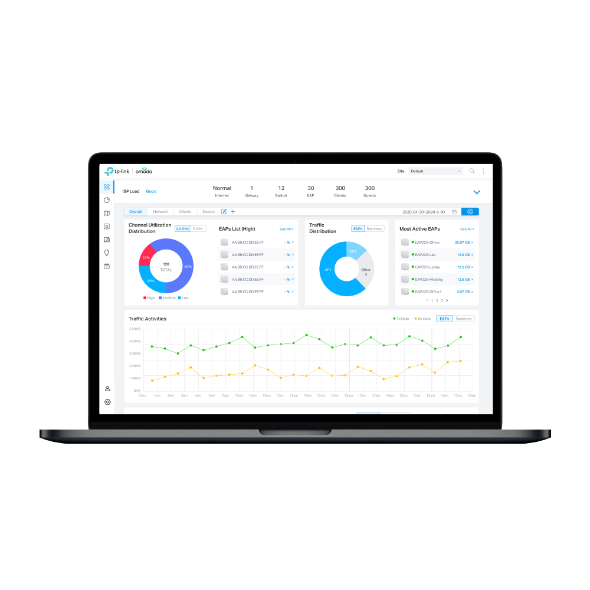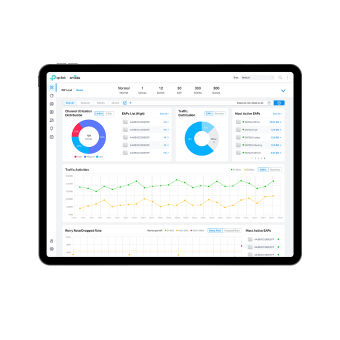Wie konfiguriere ich ein Konto auf dem Omada Controller?
Inhalt
Ziel
Dieser Artikel zeigt, wie Benutzer und Rollen im Omada Controller konfiguriert werden können.
Anforderungen
- Omada Software Controller (Version 5.8 und höher) / Cloud-Based Controller / Hardware Controller
Einführung
Durch die Konfiguration von Benutzern und Rollen im Omada Controller können Sie verschiedenen Konten spezifische Zugriffs- und Betriebsrechte zuweisen und so die Sicherheit des Controllersystems verbessern.
Es gibt drei Rollen: Hauptadministrator, Administrator und Betrachter.
- Hauptadministrator
Der Hauptadministrator kann auf alle Funktionen in der entsprechenden Ansicht zugreifen. Das Konto, das den Controller zuerst erstellt, wird Hauptadministrator.
- Administrator
Administratoren können auf die meisten Funktionen in der entsprechenden Ansicht zugreifen, jedoch sind einige Module eingeschränkt. Beispielsweise dürfen sie keine Controller-Migrationen oder automatischen Datensicherungen durchführen und haben nur Lesezugriff auf Lizenzverwaltung und benutzerdefinierte Konto-Rollen.
- Betrachter
Betrachter können den Status und die Einstellungen bestimmter Funktionen in der entsprechenden Ansicht einsehen.
Die detaillierten Berechtigungen jeder Rolle können in Globale Ansicht > Konto > Rolle eingesehen werden. Es gibt vier Berechtigungsstufen: Ändern, Nur anzeigen, Zugriff und Blockieren.
- Ändern: Benutzer können auf alle Daten zugreifen und alle Funktionen der angegebenen Module nutzen.
Hinweis: Einige Funktionen, wie der MSP-Modus, die automatische Aktivierung und die Verlängerung von Lizenzen, können nur vom Hauptadministrator genutzt werden.
- Nur anzeigen: Benutzer haben nur Lesezugriff auf die angegebenen Module und können keine Funktionen nutzen.
- Zugriff: Benutzer können auf einige Funktionen der angegebenen Module zugreifen und diese nutzen.
- Blockieren: Benutzer sind von der Nutzung der angegebenen Seiten und Funktionen ausgeschlossen.


Hinweis: Um Benutzern das erfolgreiche Anmelden an der Site zu erleichtern, kann die Site-Liste angezeigt werden, selbst wenn die Berechtigung der Globalen Dashboard-Seite auf Blockieren gesetzt ist.
Wenn die Standardrolle Ihre Anforderungen nicht erfüllt, können Sie eine Rolle erstellen und deren Berechtigungen anpassen.
Konfiguration
Schritt 1. Melden Sie sich am Omada Controller an, gehen Sie zu Globale Ansicht > Konto > Rolle, und klicken Sie auf Neue Rolle hinzufügen. Geben Sie den Rollennamen ein und legen Sie die Berechtigungen für die verschiedenen Ansichten fest.


Schritt 2. Gehen Sie zu Globale Ansicht> Konto > Konto und klicken Sie auf Neuen Benutzer hinzufügen. Geben Sie den Benutzernamen und das Passwort ein und wählen Sie die erstellte Rolle aus. Konfigurieren Sie unter Site-Berechtigungen die Seitenberechtigungen des Benutzers, um den Zugriff auf bestimmte Sites zu beschränken. Standardmäßig ist Alle Sites ausgewählt, und Sie können Sites manuell nach Bedarf auswählen. Geben Sie die E-Mail und Alarm-E-Mail ein, um generierte Betriebsprotokolle und Alarmprotokolle zu erhalten.


Fazit
Sie haben jetzt ein Konto mit benutzerdefinierten Rollen erstellt, um die Benutzerberechtigungen einzuschränken.
Weitere Details zu den einzelnen Funktionen und Konfigurationen finden Sie im Download-Center, wo Sie das Handbuch für Ihr Produkt herunterladen können.
Finden Sie diese FAQ hilfreich?
Mit Ihrer Rückmeldung tragen Sie dazu bei, dass wir unsere Webpräsenz verbessern.
Von United States?
Erhalten Sie Produkte, Events und Leistungen speziell für Ihre Region










